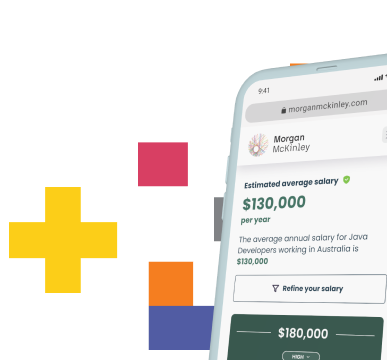The Inside Story Of Tipper X - How it started

The New York Times called him “The secret witness at the center of the biggest insider trading case in a generation.” I recently sat down with Tom Hardin, also known as Tipper X, to discuss his background and how he got to where he is today.
The making of Tipper X
This interview will be broken down into two episodes, so make sure you watch this space to find out all about Tom Hardin, his story and how he became one of the most prolific informants in securities fraud history.
Over the two part sit down series, we’ll spend some time discussing Tom Hardin’s actions and how he ended up being known as “Tipper X.”
Looking to hire for Risk & Compliance? We can find you the best talent.
Introduction
Tom Hardin previously spent much of his career as a hedge fund analyst, focused on global equities in the technology sector. In 2008, as part of a cooperation agreement with the ![]()
United States Department of Justice, Tom assisted the U.S. government in understanding how insider trading occurred in the hedge fund industry. Known as “Tipper X”, Tom became one of the most prolific informants in securities fraud history, credited with helping to build over 20 of the 80+ individual criminal cases in “Operation Perfect Hedge”, a Wall Street house cleaning campaign that morphed into the largest insider trading investigation of a generation. Since resolving his case, Tom was invited by FBI-NYC to speak to their rookie agent class in 2016 and now is an internationally recognised speaker on compliance, ethics and conduct risk, with over 200 speaking engagements to date, either in-house with companies in the financial services industry or serving as a conference keynote speaker. Tom holds a B.S. in Economics with a Finance concentration from the Wharton School at the University of Pennsylvania.
Tom Hardin’s Educational & Professional Background
Tom, tell us about your background and how you ended up in the hedge fund industry.
I grew up in the suburbs of Atlanta, Georgia in a two-parent, middle class family, the oldest of three brothers. Shortly after graduating from Penn, I started working in the hedge fund industry. My first job was covering tech stocks for an $800 million hedge fund in Greenwich, CT.
When did you first become aware of trading on material nonpublic information (MNPI) occurring in the hedge fund industry?
As an analyst, I’d frequently attend investment conferences hosted by large bulge-bracket investment banks who would have their listed technology company clients present to us (investors) and then we would have the chance to meet with management teams 1:1. From the years 2000-2006, I began to notice an increasing rate of small groups of investors sharing MNPI with each other at these conferences. During these years, hedge funds would often hire ex-tech company employees to work as analysts, so they could call back to their old company contacts for information. It was also evident to me that certain groups were divided by ethnicity at the time, harvesting relationships with tech company executives from their home countries. At that time, this sub-sector of the conference scene was a world of which I did not feel I was a part of nor needed to be. The FT commissioned a 3rd party research firm around 2006 which noted that in 60% of the largest M&A deals around that time, the target companies had unexplained spikes in the share prices before deals were announced. Leakage of deal information like this, and leakage of corporate earnings information, was becoming more rampant in the industry.
What was your attitude towards compliance at the time?
I worked at small firms in my first 7 years in the business, so there wasn’t a substantial amount of compliance training. I remember once a year hearing “don’t email anything you wouldn’t want on the front of the Wall Street Journal” and that was more or less 90% of the training. In 2006, I joined a small hedge fund as the junior partner to my senior partner and we had a CFO. The CCO function was relatively new in the industry at this time, much of our compliance work was done by the firm who seeded us, but I viewed compliance as “nameless, faceless” at the time.
Corrupt Conduct
Tom, between graduating from university in 1999 and pleading guilty to securities fraud in 2009, how did it start?
In 2001 at age 23, very early in my career, I met an investor named Roomy Khan at these conferences which I’d attend. Like many people I’d meet, I started chatting about sectors, stocks, just common industry discussions. However, I could tell just by talking to her for a minute that she didn’t seem like the most ethical person (an understatement). Unbeknownst to me, she was already a convicted felon for a wire fraud charge at her previous employer but that was a sealed case, so no public record. She would later be the individual who tipped me on four trades in stocks that I placed on MNPI. I make the point in my presentations today that “You’re the average of the five people with whom you surround yourself. Choose wisely.”
By 2006, as I mentioned before, I knew this behavior to be quite rampant of trading on MNPI. My firm was up about 20% in 2006, a really great start. One particular potential investor we met with however said that while we had a great start, we didn’t outperform the fund he already had money with in our sector, Raj Rajaratnam (who later was sentenced to 11 years in prison for insider trading), why would this potential investor invest with a startup like us, when he could give more money to what he termed the “sure thing.” That meeting most definitely sat in my mind the next few months and in March 2007, Roomy called me in my office. At first we were talking about conferences we were going to attend, meetings we had coming up… but about half way through our conversation she said, “Tom, I have something for you but you can’t tell anyone” and she proceeded to tell me that a Moody’s analyst, who was roommates with her cousin, told her that Kronos (ticker: KRON) was going to be acquired next week, this date, this price by this private equity firm. Very stark, explicit information.
I knew her to be full of rumors up to this point over the years, but the actual call sounded much different than a rumor. I did not place any trades in KRON but later that day I was talking to someone I knew at another firm, he worked at a proprietary trading firm “eat what you kill”, he was losing money and asking me if I had any ideas to help him and I passed the tip on to him. Right here, I’ve acted quite recklessly by sharing this info with him and I can now be charged with insider trading and I haven’t even traded yet. He now passes the tip along to other traders at his firm. The next day or two, he calls me back and asks if I had bought some. I had not in fact up to that point, but as the junior partner at my firm, I could initiate a less than 1% position in our portfolio without talking to my senior partner (a starter position) and I ended up buying a 0.9% position in KRON. KRON was acquired a few days later, exactly as Roomy stated. At my firm, I was not reprimanded, no one said anything, and once you do it once, it becomes easy to do it again. There were three more tips and trade – all small 0.9% positions in the portfolio.

How did you feel about it? Did you realize you were breaking the law by trading on material non-public information (MNPI) and/or rationalise it?
I told myself “who am I hurting?”, “I can still think of myself as a good person”, “everyone else is doing it”, etc., the common poor rationalisations for how a white-collar crime can start. As I’ve had plenty of time to reflect, and one point I make today in my talks is what I’m engaging in here is “isolated decision making”. I did not talk to my senior partner, compliance, anyone else at my firm, made the decision on my own to cross a very big line and now that I’ve completed a deep dive into white-collar crime the past 2.5 years, one similar thread we can pull over and over in many cases is this idea of “making a decision in isolation.”
I also justified the trade as an “immaterial” trade because of the size. It is quite amazing how many other cases we’ve seen of misconduct where the person accused or fined also tries to minimize their own perception of their misconduct, using what are called “reduction words”, terms like “all I did was”, “merely”, “not more than”. In my company talks, where clients have shared their own misconduct situations with me, it often can be traced to some kind of justification around these types of “reduction words.”
I also have broken laws my whole life: age 17, speeding a little bit over the limit when I was issued my driver’s license; age 21, downloading a few songs a week on Napster; age 25, online gambling a few hours per month, etc. It was the exact same “who am I hurting?” mindset at age 29 that led to placing the trade. It doesn’t take a “Bernie Madoff master criminal plan” to commit securities fraud.
Did you ever consider the possibility of being caught or the amount of money you were making on the four trades?
I never considered the idea of ever being caught because “I was trading small” and never thought about the money to be made on the crime. My total personal disgorgement was $46,000, which was my profit participation as the junior partner on the four illicit trades. People are usually shocked that Tipper X only made $46,000. Never thought about the riches to be made on the crime. Financial crimes professionals often ask me how did I cover my tracks? I did nothing to try and hide the trades as I never considered the idea of being caught.
I think it had more to do with “puffery” at the time where, as a young analyst, I could go back to the conferences after the first trade and foolishly stick my chest out with the other groups who I knew were engaged in this behaviour to signal I was part of the group now. Extremely foolish behaviour obviously looking back. $46,000 was the price of my professional suicide.
Could anything have stopped you in 2007 from making that first trade?
I thought I was a good guy but could just commit these 4 illicit trades and still be a good guy, great investor on 99% of everything else I was doing. If I had the right mentor at the time in my 20s, the right person would have slapped me around “Tom, you’re already doing so well in your career, why would you ever do something like that, you’re a great guy, etc”. It was very easy for me to override my own perception of myself and commit an illicit act, it is very hard to override someone else’s opinion of yourself if it confirms what you already believe.
Watch out for part two of our series with Tom Hardin, also known as Tipper X. In the next instalment, we will be looking at how he got caught and what happened next. Make sure you are following me to find out how he became one of the most prolific informants in securities fraud history.















